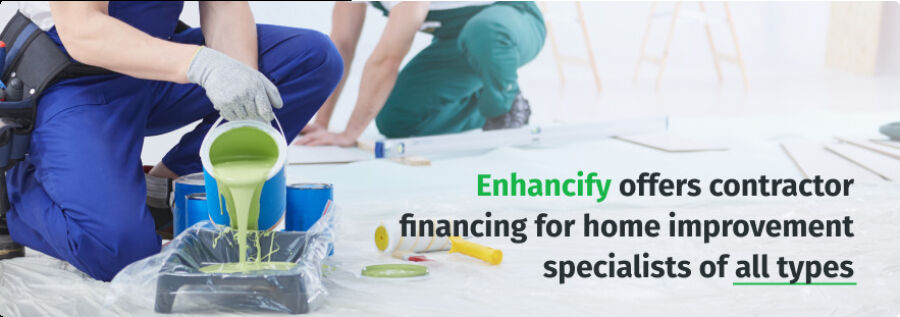
While the COVID-19 pandemic affected most businesses and households, spending on home improvement and repairs grew in 2020 as people modified living spaces for work, school, and leisure. In 2021 the trend continues as working from home remains common practice and people move from expensive metros to less expensive areas to lower their housing costs, which would, in turn, leave more of their budgets for remodeling projects.
The average home improvement spending was $8,305 in 2020. Home improvement and remodeling include projects like remodeling a bathroom, remodeling a kitchen, painting, building a deck or porch, adding an addition, installing new flooring, and making big landscaping improvements. And while consumers adjusted their vacation, commuting and restaurant budgets into improving their homes, big projects are still financed through home improvement financing.
The most common home improvement financing options are cash-out refinancing, home equity loans, contractor arranged financing, and even credit cards to finance their home improvement plans. Understanding these types of financing options provides you the ability to offer homeowners the best option, which impacts speed and overall affordability.
Here we look at the most common home improvement financing options:
- Cash-out refinancing comes with the benefits of a standard refinancing, plus homeowners get tax-free cash paid out to them that can be used to fund a large purchase or home improvement project. The cash-out mortgage is paid out to the homeowner in cash at closing, which is generally 45 to 60 days from the application date.
- Home equity loans and home equity lines of credit (HELOC) are lines of credit secured by your home. The costs of such loans are generally less than those for a cash-out refinance. Home equity loans provide a single lump-sum amount to the borrower that should be repaid over a set period of time. A HELOC is a revolving line of credit, much like a credit card, and typically has a variable interest rate. This type of credit can lead to home foreclosure.
- Home improvement contractor financing programs are software solutions that help integrate financing options into the sales process. For homeowners, they provide an appealing middle-of-the-road option because of the easier application process. For example, home improvement loans offered through Enhancify's platform currently feature APRs from 7.99% to 39%, depending on the length of the loan term and the borrower's credit score.

- Credit cards are another popular way of financing home improvement projects. This option is dependent on the approved credit limit, which is typically under $10,000. Credit cards can also have higher interest rates than home improvement loans or HELOC.
Directing your customers to the right home improvement financing option can simplify business, sales process, and customer experience. Therefore, offering contractor financing for home improvements get you better control over customer financing options, and as a result, you maintain better control of your project margins. So if you do not offer financing to your customers yet, now is the right time you considered contractor financing, especially if you want to grow your business.
